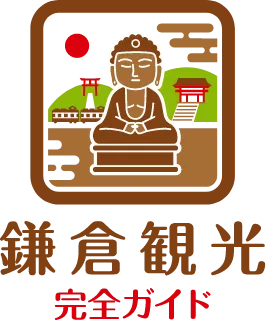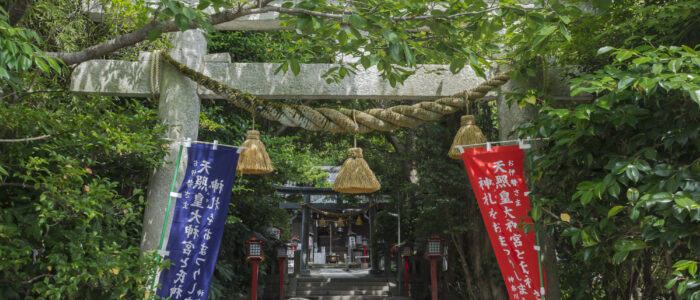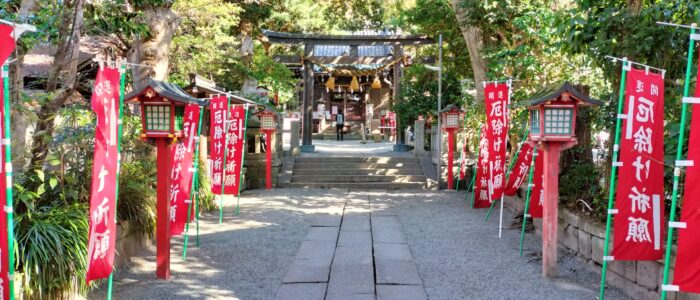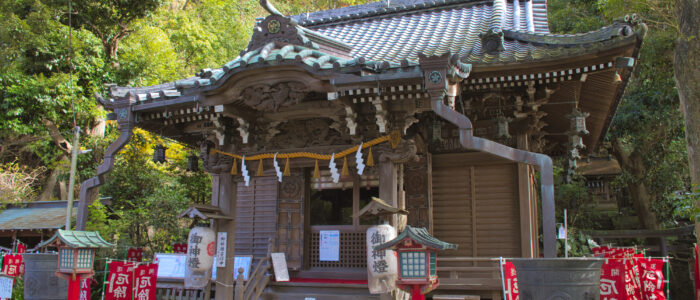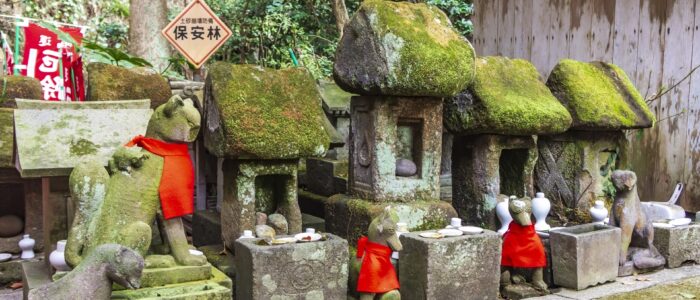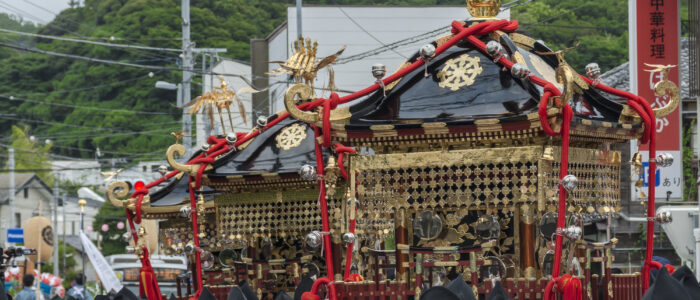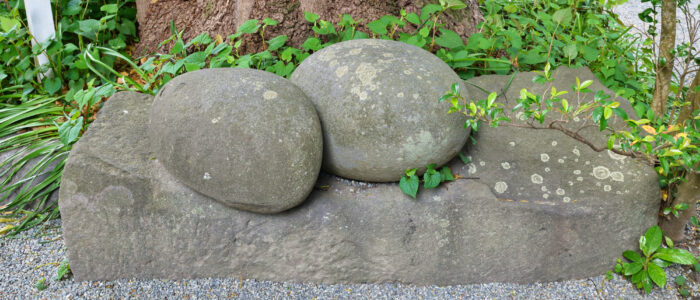Yakumo Shrine (八雲神社)
Discover the History of Yakumo Jinja (八雲神社)
Located in the Omachi area of Kamakura (鎌倉), Yakumo Jinja is believed to be the city’s oldest shrine dedicated to warding off evil. It was founded in the late 11th century by Minamoto no Yoshimitsu (源義光), also known as Shinra Saburo Yoshimitsu. During a time of plague, he enshrined a deity from Kyoto’s Gion Shrine (祇園社, now Yasaka Shrine), giving birth to the spiritual legacy that has endured for centuries. The shrine has long been affectionately known by locals as “Yaku-yoke-san,” or the protector against misfortune.
Nature, Craftsmanship, and Sacred Atmosphere
The tree-lined approach to the shrine creates a mystical atmosphere that deepens as you enter the tranquil grounds. Within the precincts, you’ll find the “Tedama Stone,” said to have been lifted by Yoshimitsu in a test of strength. Another highlight is the “Tensuiban”—a water-catching basin designed by Bungo Suzuki (鈴木文吾), the artisan behind the 1964 Tokyo Olympic cauldron. These features blend history, nature, and artistic legacy in a truly unique setting.
Spiritual Beliefs and Symbolic Power
Yakumo Jinja enshrines Susanoo-no-Mikoto (須佐之男命), a powerful deity historically associated with Gozu Tenno (牛頭天王), once feared as a god of disease. Over time, this image transformed into one of protection, and today Susanoo is revered for his ability to ward off misfortune, bring good luck, bless households, and support prosperity in business.
Cultural Treasures and Immersive Experiences
The treasure hall displays cultural artifacts such as an Edo-period mikoshi (portable shrine), ancient documents, hanging Buddha images, and theatrical masks. Visitors can also view the massive Tedama Stone up close, a physical representation of legendary strength.
Omikuji, Goshuin, and Local Traditions
In addition to its own goshuin (temple stamp), the shrine office offers stamps for nearby shrines as well. A popular charm for pet safety is also available, showing care for all beings. Seasonal rituals such as New Year’s blessings, the “Hatsu-Kagura” performance, and the “Sagicho” fire festival bring the community together.
How to Get There and When to Visit
The shrine is just a 10-minute walk from Kamakura Station (鎌倉駅), making it easily accessible. The grounds remain open all day without gated hours. Goshuin are available from 8:30 AM to 4:30 PM.
When to Visit for the Best Experience
In the soft morning or evening light, the shrine is especially peaceful. Guests staying at Tosh’s Place (トシズプレイス), a self-check-in hotel with a kitchen, can make the most of these quiet times before or after the crowds.
Nearby Spots for an Enriching Walk
Nearby, you’ll find historic temples like Honkaku-ji Temple (本覚寺) and Myohon-ji Temple (妙本寺), ideal for a cultural walking tour starting from Yakumo Jinja. Komachi Main Street (小町通り) and Tsurugaoka Hachimangu Shrine (鶴岡八幡宮) are also close by for a blend of tradition, food, and shopping.
Who Will Enjoy This Spot Most?
Perfect for those seeking calm, interested in Japanese mythology, or collecting goshuin. With a stay at Tosh’s Place, you can enjoy peaceful visits and quiet moments of reflection and photography.
Wrap-Up: Why Yakumo Jinja Belongs on Your Kamakura Stay
Yakumo Jinja offers a rare chance to connect with Kamakura’s spiritual and cultural roots. From protective traditions to quiet beauty, it’s a spot best explored with time on your side. Staying at Tosh’s Place lets you enjoy these moments at your own pace, morning or night.
